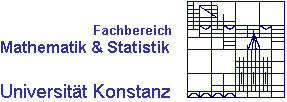

| |
 |
 |
|
|
Heat transport in glass wool insulation
Glass fiber insulation plays a significant role in energy conservation in buildings. These insulators are manufactured in the form of thick rectangular sheets and are fitted in the walls. With growing awareness towards energy conservation, in recent time, a lot of research is going on to improve the quality of these insulators. Physical experiments have shown that as the porosity of this insulating material increases, i.e. the amount of glass fibers decreases, the effective heat transfer coefficient of the material also decreases. This is in accordance with the fact that the coefficient of thermal conductivity of glass is quite large compared to that of air. But this phenomenon continues only up to a certain level of porosity. If the porosity crosses that level, the heat transfer coefficient of the insulating material again starts to rise with porosity. The main objective of this project is to explain this typical behavior of the heat transfer coefficient by deriving mathematical models for the heat flow through the glass fiber insulation.  At high porosity, the glasswool sheet (top left) exhibits regions with comparably low fibre density. As a model, a regular array of holes with thin glass rims is considered (top middle). To compute the heat flow through such a structure, it suffices to consider one cell (top right). A direct simulation is complicated by the fact that the glass rim is very thin which leads to unfavorable meshes (lower right). Using asymptotic analysis, the contribution of the glass can be computed analytically in leading order. The flow simulation is only required in the interior air part (lower left).
|